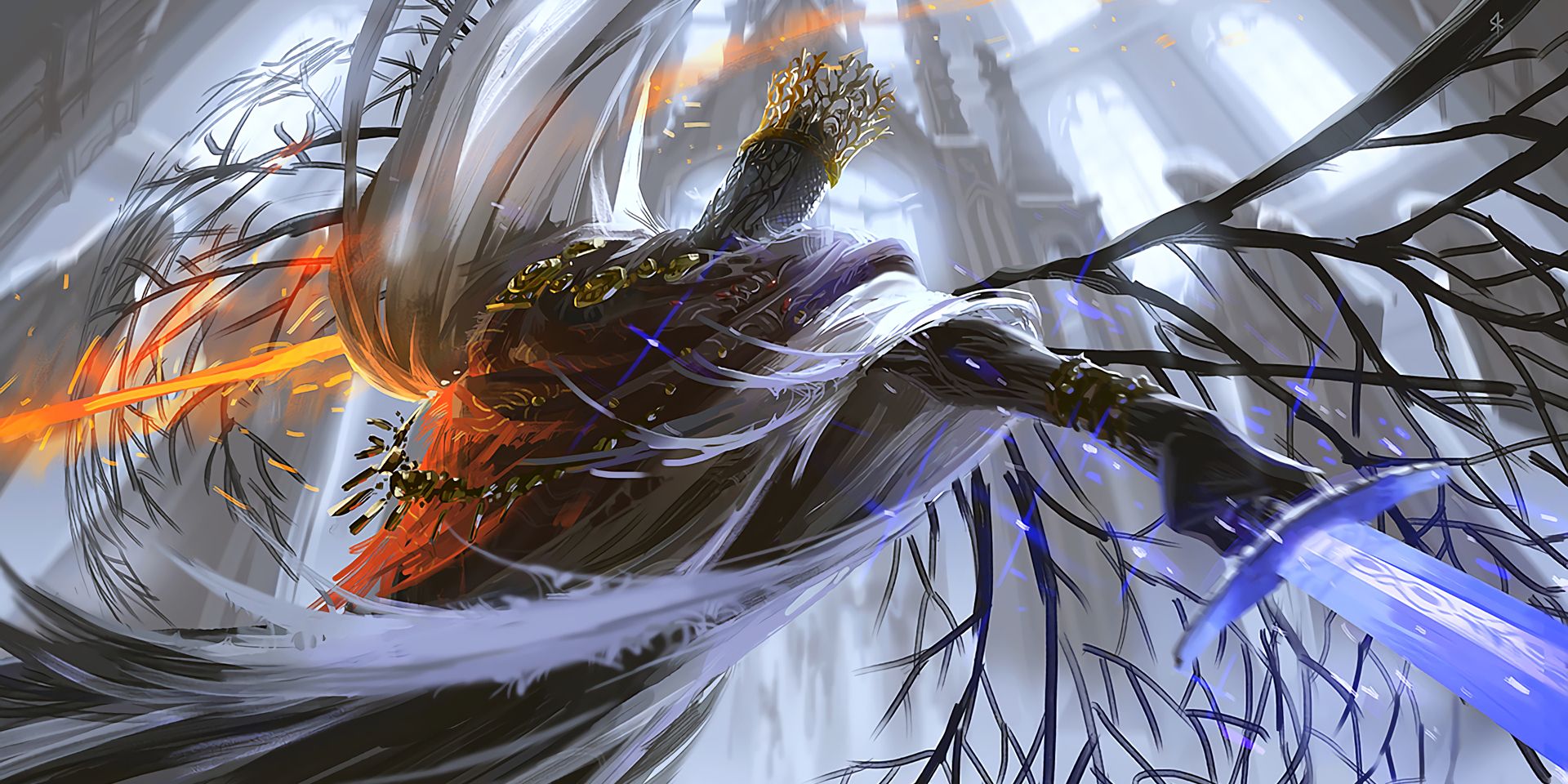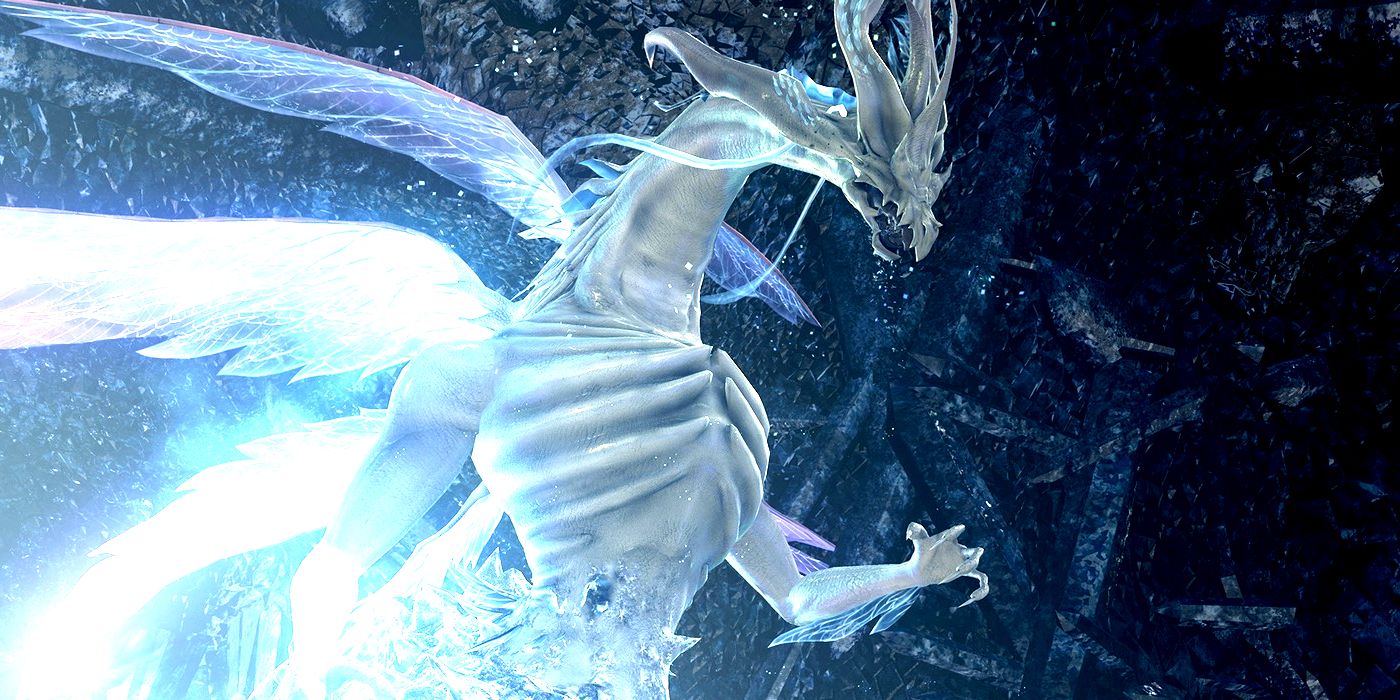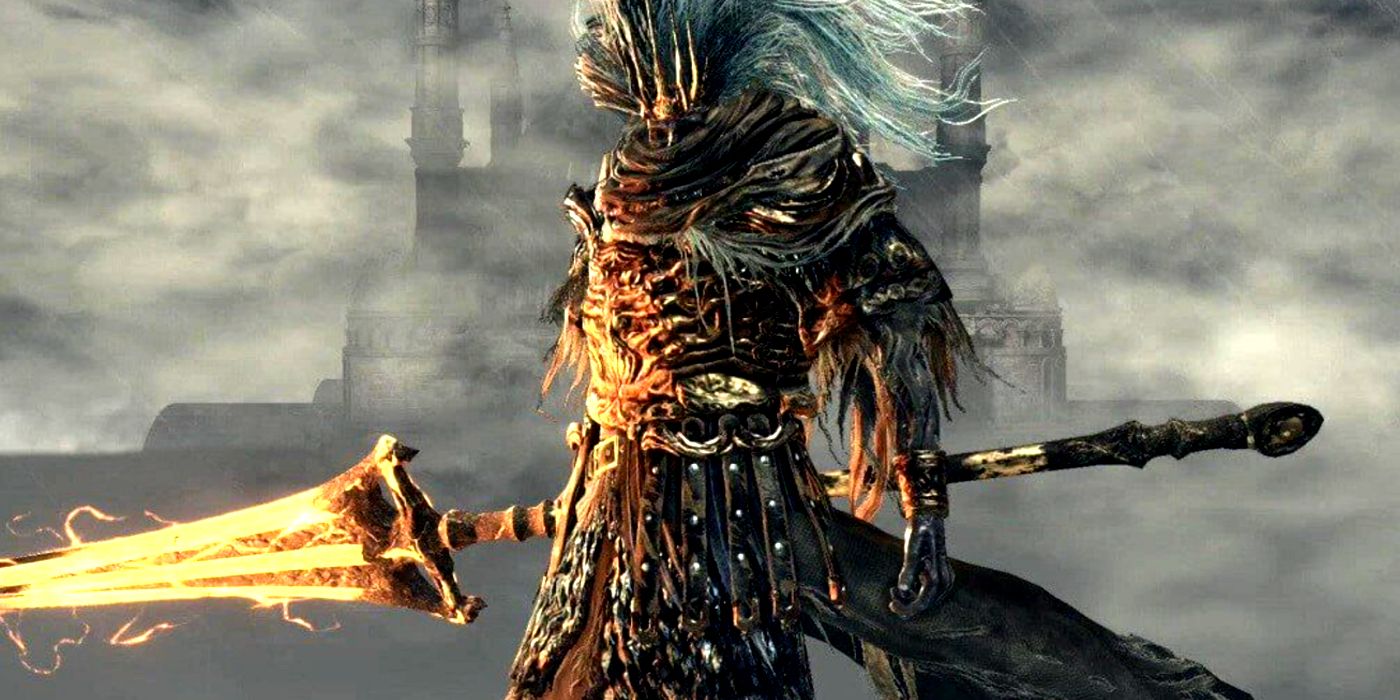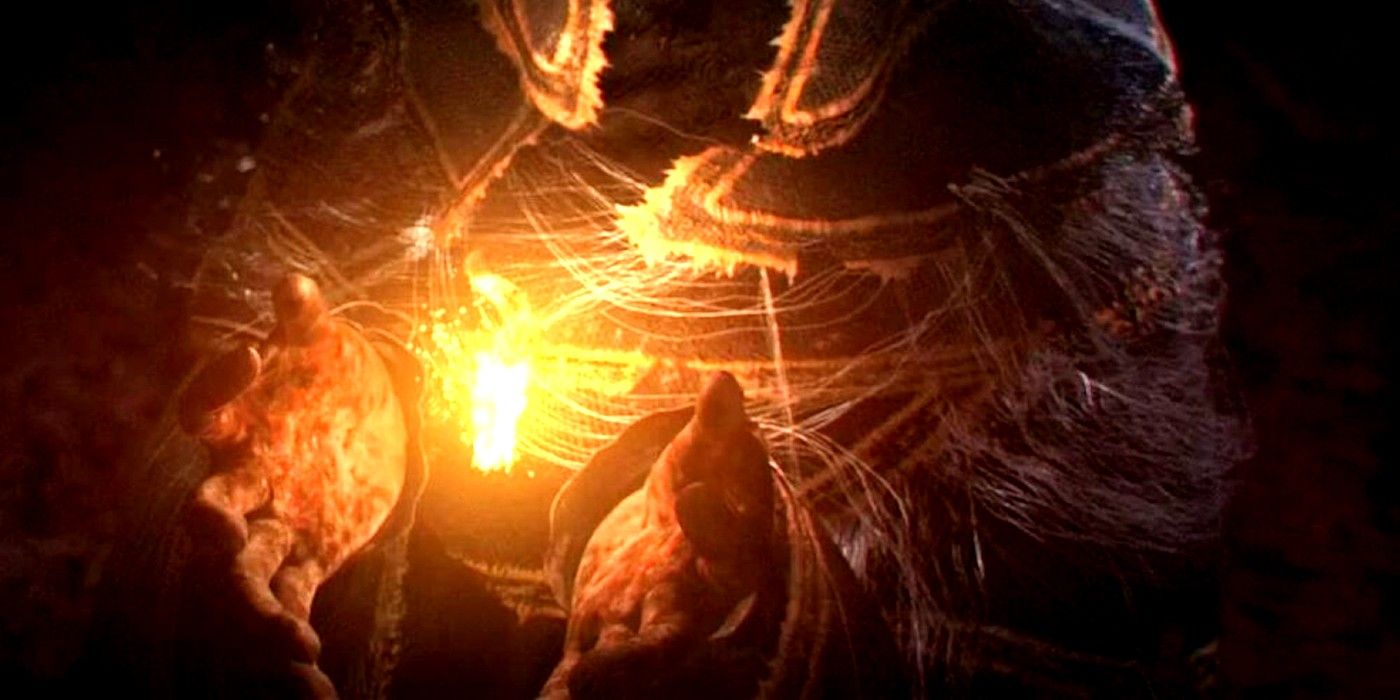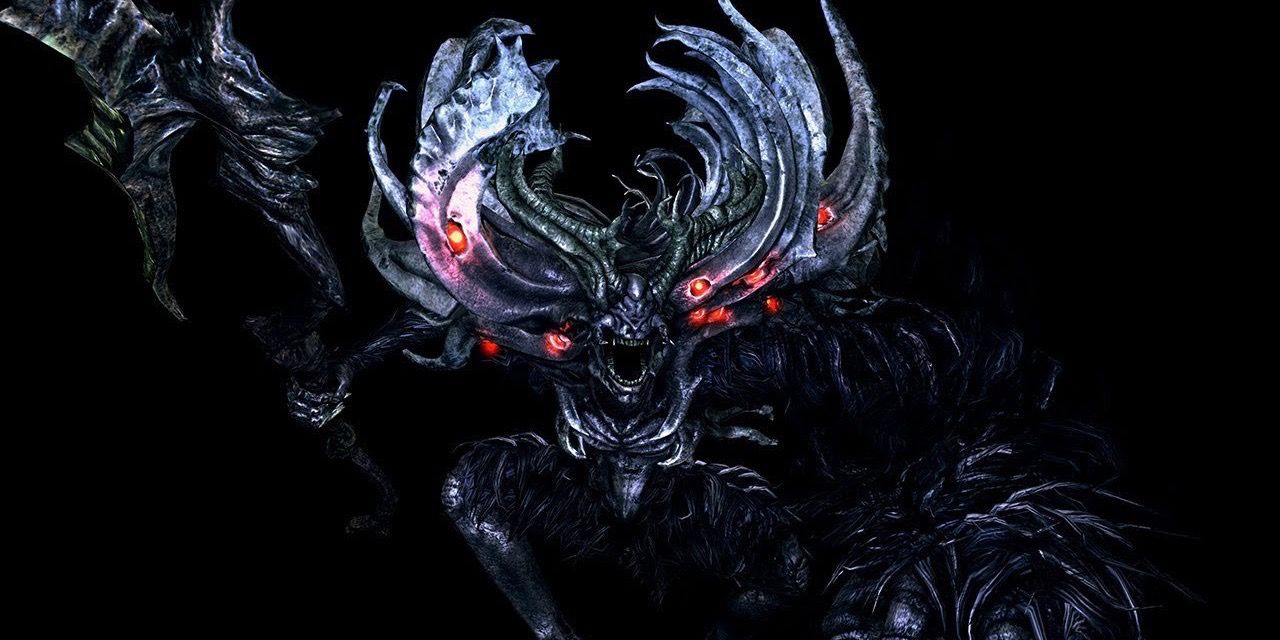The three games of FromSoftware's Dark Souls trilogy have always had a wide variety of magical spells which players could employ, some based off of spells from its predecessor Demon's Souls, others original forms of magic. Many of these spells, particularly the fireball and healing spells, are familiar staples of the fantasy RPG genre. Thematically, developers at FromSoftware took a novel approach of presenting their schools of magic – Sorcery, Miracles, and Pyromancy – as gifts bestowed on humanity by divine beings in order to win their allegiance and prevent them from developing their true power.
A brief disclaimer: two schools of magic in Dark Souls – Sorcery and Miracles – originally came from Demon's Souls, the dark fantasy game that pioneered the entire "Soulslike" sub-genre of RPGs. Many of these Demon's Souls spells – Soul Arrow, Acid Cloud, Heal, God's Wrath – appear in the Dark Souls games practically unchanged in function, but divorced from the world-building of their game of origin. To give these systems of spell-craft a proper place in the world of Dark Souls, developers at FromSoftware had to connect them to the game's setting in some way... and they did so by making these magical arts endowments from the divine beings at the heart of the enigmatic Dark Souls story.
In the opening cutscene of the first Dark Souls game, players witness the world's creation myth, in which fire and darkness is born and three factions join forces to overthrow the dragons of old: Gywn and the Lords of Light, the Witch of Izalith and her Daughters of Chaos, Nito, First of the Dead, and a traitor dragon named Seath the Scaleless. After defeating the ancient dragons, each of these powerful divine figures became rulers of humanity, and won the allegiance of the humans in their domains through force, charisma, and the gifting of three magical arts.
Dark Souls Magic #1: Sorcery
In both Demon's Souls and the Demon's Souls Remake, humanity unlocked the ability to wield the Soul Arts after King Allant, ruler of Boletaria, released the ancient demon known as the Old One from its ancient prison. With a wand in hand and sufficient strength in both intelligence and magic power, Demon's Souls sorcerers like Sage Freke can channel the energies of their own souls to hurl bolts of energy. The close link between a sorcerer's powers and the souls of demons, however, makes them untrustworthy in the eyes of god-fearing clerics and saints.
When the magic spells of Demon's Souls were transplanted to the narrative of Dark Souls, a new origin story was required. After Seath the Scaleless betrayed his fellow dragons and helped usher in the Age of Fire, he sequestered himself in his castle, turning it into a great archive of books and experimental chambers where he tried to grant himself the immortality he sorely lacked. To acquire test subjects, he enlisted the aid of humans and taught them the art of Sorcery, a novel magic of his own creation where the practitioner channels soul energy through Catalyst staves to manipulate light and crystals. This justifies Dark Souls-exclusive spells such as "Hidden Body" or "Homing Crystal Soul Mass," which can conceal a player character from view or generate crystal projectiles. Even centuries after Seath's destruction, the sorcerous academies alluded to in Dark Souls item descriptions still revere their dragon progenitors, using dragon symbolism to guide them in the mastery of their craft.
Dark Souls Magic #2: Miracles
In Demon's Souls and the Demon's Souls Remake, Miracles are primarily healing and restorative spells invoked by Clerics through Talismans and the power of their faith. The ability to use Miracles 'awoke' in humanity soon after the Old One was roused, which clerics such as Saint Urbain interpret as the hand of God empowering his servants to stand against the demons of Boletaria. Other NPCs in the world of Demon's Souls suspect a darker truth: that Miracles are just another kind of Soul Art, and Clerics like Saint Urbain are unknowingly worshipping the Old One itself.
In the world of Dark Souls, the Lords of Anor Londo – Gwyn, Gwynevere, Gwyndolin, Allfather Lloyd, and the Nameless King – also empowered their subjects and worshippers with Miracles, portrayed in item descriptions as heroic stories of gods brought to life by a caster's Talisman and their piety. For this reason, the various Miracles seen in the Dark Souls games all correspond to the attributes of a particular deity: ranged attack miracles such as "Lightning Spear" embody the golden lightning bolts of Gwyn and his disgraced firstborn son, while the restorative spell "Caressing Tears" invokes the compassion of Caitha, a goddess that weeps for the unfortunate.
Dark Souls Magic #3: Pyromancy
Back in Demon's Souls and the Demon's Souls Remake, fire magic and cloud conjuration were just another type of Magic Spells, cast through wands by sorcerer characters who invested in attributes like Intelligence over the Strength and Dexterity needed to wield the game's medieval weapons. For Dark Souls, a game with a world and story built heavily around themes of light, darkness, and fire, developers at FromSoftware decided to put all the fire-themed spells into their own category of magic, a discipline that didn't require players to invest heavily in either Intelligence or Faith.
According to the description of the Izalith Catalyst in Dark Souls, the art of controlling Flame was taught to humanity by the Witch of Izalith, whose flame witch daughters used staves to cast their spells much like Seath's sorcerers. As the mythical First Flame, the god's source of power, started to fade, the Witch attempted to use her own soul as a catalyst for a new primal bonfire, an experiment which went horribly wrong, creating a Bed of Chaos that produced hordes of demons. The few survivors of this cataclysm taught the human denizens of the Great Swamp a new form of magic called Pyromancy, a discipline based on intuitively manipulating fire to create burning projectiles, conjure clouds of toxic mist, fortify the body through internal heat, or even charm Undead enemies to one's side. Other magicians in Dark Souls tend to look down on Pyromancers for the un-scholarly nature of their magic, ignoring Pyromancy's close relation to the Bonfires so many humans in Dark Souls revere.
Dark Souls Magic #4: "Hexes," The Dark Magic Of Humanity
In Dark Souls I and Dark Souls III, each discipline of magic contains a sub-set of spells with dark, sinister auras to them: Sorceries that fire shadowy ghosts, Miracles that hurl gnawing insects, black Pyromancy flames that cast no shadow. In Dark Souls II, these 'dark spells' are classified as Hexes, a discipline heavily implied by NPCs and item descriptions to be the only form of magic drawn from the power of humanity, not the divine. This raises a pressing question about the lore of the Dark Souls universe: if humanity is pre-disposed to wielding the magic of darkness, why would Gwyn, Seath, and the Witch both to gift humans with their own divine powers?
The Dark Souls trilogy (and indeed, all of Hidetaka Miyazaki's "Soulslike" Games) makes a point of never handing the truth to its players. To undercover the secrets of the Dark Souls world, gamers have had to gather clues from characters and locations in all three games, talking to Darkstalker Kaathe in Dark Souls I, gleaning secrets from Alida, Scholar Of The First Sin in Dark Souls II, and exploring the depths of the Ringed City in Dark Souls III. From this amalgamation of details, along with the lore included in item descriptions, the fanbase of Dark Souls has developed a theory about the true magic of humanity, borne from the titular "Dark Soul" of their ancient creator.
At the dawn of the Age of Fire, when Gwyn and the other gods of fire fought the dragons, an obscure god called the Furtive Pygmy shared the power of his Dark Soul with his children, ancestors of humans who could channel the power of the Abyss. Unlike the mutated Abyss monsters seen throughout the Dark Souls games, these primordial humans maintained their human form and minds, and were in fact valiant allies of the gods during their war against the ancient dragons. After the war, Gwyn, Lord of Sunlight and chief of the Gods, granted the Pygmy Lords an ornate Ringed City in which to live, a generous act which veiled his efforts to cripple the potential strength of humanity before they could ever threaten his reign.
As revealed in Dark Souls III's Ringed City DLC, Gwyn isolated the Ringed City from the rest of the world by using the powers of his daughter Fillianore to suspend it in time. He branded early humans with a Sigil of Fire to seal off their dark powers, a sinful act which gave rise to the Darksign, a contagious curse that burned away the souls of humans and turned them into "Hollow" undead. He tricked generations of heroes into attempting to cure the Darksign by burning themselves alive in the kiln of the First Flame, prolonging his precious Age of Fire far past its natural span. And, finally, Gwyn and his fellow gods taught humans the arts of Pyromancy, Sorcery, and Miracles – useful skills to be sure, but also crutches which made the humans of Dark Souls dependent on their gods, unable to unlock their true power.

